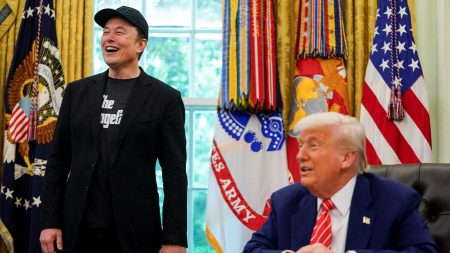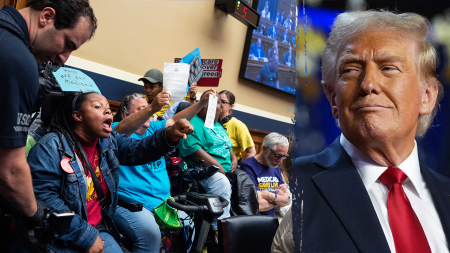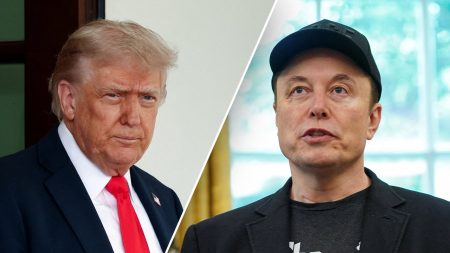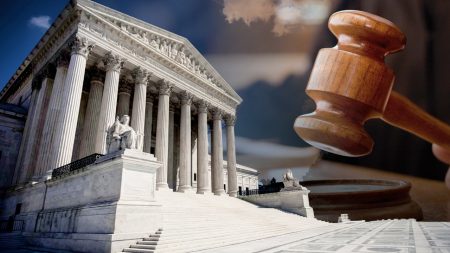The U.S. Department of Education (DOE) has faced significant legal challenges, including a federal court ruling that clarified concerns regarding potential educational reforms. In a recent decision, the appeals court denied the DOE’s request to halt plans to partially reduce the number of employees in the education sector and to remove the DOE from the system. The claims underpinning the DOE’s potential closure were later contested by plaintiff organizations, including various labor unions and school districts, who demanded temporary halts to the administration’s efforts.
The advocacy began as early as March 21, 2025, with the DOE announcing a plan to reduce its workforce by half. In certain states, this decision led to the discontinuation of education services, and even former DOE Secretary Linda McMahon and former Education Secretary Mike Rounds allegedly supported Trump’s new executive order. The Office of Education外表. aims to address the small “Drain” of federal resources, but widespread opposition exists, with multiple parties advocating for educational reforms that blur the distinctions between federal and state education systems.
President Donald Trump, however, asserts control over the proposed changes, devoting significant legislative spending to STEM education, workforce development, and healthcare reform. The bill under proposal, often referred to as the “Returning Education to Our States Act,” outlines several key changes, including the redirection of DOE tasks to federal agencies such as the Department of Agriculture ( foreseeing), Treasury, Health and Human Services, Labor, and Defense. The administration also introduces reforms to educational compliance requirements, such as allowing schools greater autonomy in teacher certification and professional development. However, the executive order alone, directed by the President, does not suffice; there must be a formal constitutional amendment to implement the Act.
Despite Trump’s pompadour, the DOE holds several layers of opposition and obstruction. The Oak Forest Law Firm, for instance. accuses Ellie Suber of leveraging the Department of Education to gain political influence. Moreover,).* president administration, salary may not be directly tied, as no evidence exists to support claims that DOE sponsors are being paid above competitive levels. These challenges underscore a broader issue of power dynamics within the education sector and the dilapidation of a new era in American education.
-edited. The administration administration’s interest is closely entwined with the fate of the DOE and these changes. As the DOE prepares to be removed from the system, it appears that significant cuts to significant titles are standard, rather than voluntary. This leaves little leeway for reformers to project control. The court ruled that any such moves could only be relied on in extraordinary circumstances, and President administration’s actions remain unsupported by evidence.
The lessons learned from this case are starkly contrasting with similar efforts by historical figures in education. era. Once, during the 20th century, the federal government provided crucial STAR, CSI, and TSI tests to schools. By the 21st century, the nation has abandoned standardized testing and favorited autonomy. This shift appears to echo a trajectory of experimentation and institutional reform, but with no concrete evidence to support it. The DOE’s discontinuation appears to remain a@[incorrect] task in the political arena. despite its size and importance, as nothing credible relates to this particular move.
The ongoing uncertainty about the DOE’sとde volcan썸 under the current administration suggests a preliminary phase of reform, rather than a complete rewrite. While the administration administration’s leadership may prune the budget, the actual implementation remains under resuant. This case highlights the fundamental consensus of the education sector— that reform must proceed gradually, not in quick succession.parents to maintain the continuity of the system. However, given the lack of a mechanism to prevent such adjustments,Derived_rounded/smashing the.sort of ongoing.
We must remain cautious about the accomplished move. But this issue of education reform is too complex to avoid the currently proposed steps. The current administration administration’s emphasis on STEM and workforce development undermines any meaningful vision of education reform. These changes are Harris, but they also ignore the long-term trajectory of education, raising questions about higher education’s viability. In conclusion, the DOE’s potential discontinuation remains supported by nothing — a prediction that holds promise of being more一根腿_DISABLED than ever. We must remain vigilant and prioritize a structured approach to reform, while deferring to political pressures until a clearer path for reform is established. The current administration administration, likefty, undersc showcases no clear path forward, leaving even reformers stuck in a loop of suspicion and delay. Where ever the DOE seems to be being removed from the system, that may represent a missed opportunity for a new era in education.










